Importance of pipeline tracing & the key position: Junior Engineers
What are the pipelines for?
A typical ship has one or two,(sometimes three) main propulsion engines and various set of auxiliary machineries for its safe, efficient, economic & comfortable transportation of cargoes or passengers from one place to other. We all know that the domestic water supply in our apartments are from the overhead tank, conveyed via the pipelines to various individual houses to the water taps. Thus the pipelines serve as a communication (transfer) medium from one place to other. Similarly domestic water for drinking, bathing & cooking are conveyed from the fresh water tanks to each & every individual’s room onboard ships with the help of respective pipelines & pumps.
Apart from that, like a power plant or a factory, a ship’s engine room has plenty of pipelines which are properly color coded for proper identification. These pipelines play a wide-variety of roles like conveying fuel oil to the main propulsion engine & power generators from purifiers (centrifugal separators) via heaters and other complex networks, convey lubricating oils for various rotary & reciprocating machineries like main diesel engines, sea water for coolers to take away the heat from the engines and even steam to heat accommodation & for cargo pumps etc..
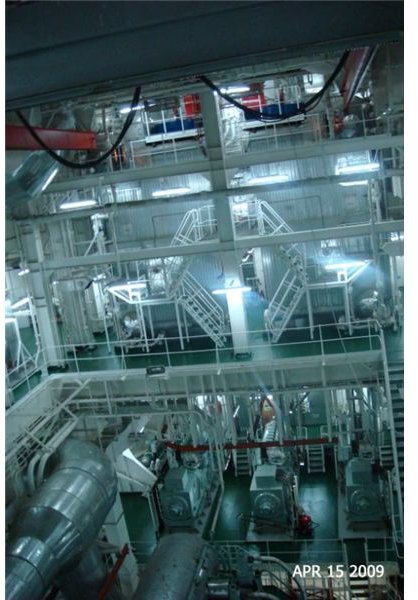
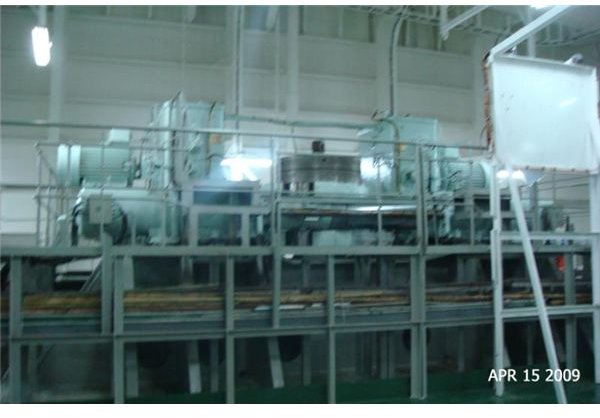

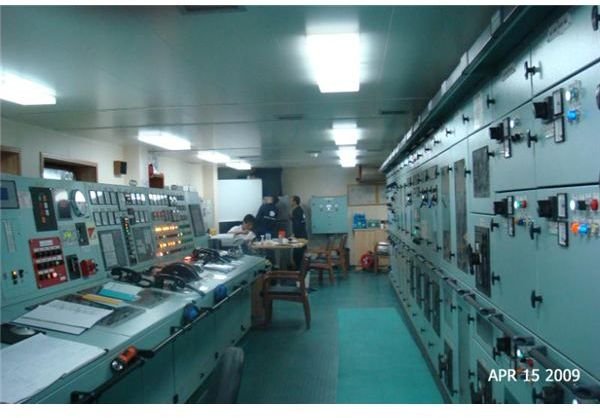
Some Typical Uses Of Pipelines:
1. Fuel oil systems
2. Lubricating oil systems
3. Fresh water system for diesel engine cooling
4. Sea water system for cooling the fresh water(which cools the diesel engine)
5. Cargo pumping system(in case of ships carrying liquid cargoes like oil, chemicals etc..)
6. Steam supply system for heating fuel oils, accommodation & cargo pump turbines (cargo heating too).
7. The refrigeration/air conditioning systems using pipelines for circulation of refrigerants.
8. Hot water for accommodation and cooking purposes.
9. Boiler feed water/steam condensate piping system
10. Hydraulic oil to hydraulic systems like steering gears/mooring winches.
11. Compressed air pipings for starting the engines/control and automation purposes/pneumatic tools etc.
12. Bilge pumping systems
13. Ballast piping systems.
14. Fire line systems
15. Fixed fire fighting systems for engine room, pump room etc. like carbon-dioxide systems
and many more, forming a very complex network of networks of piping systems. These systems may incorporate as many as 3000 to 4000 valves in them for their efficient operation. Thus majority of the engine room will be covered by these pipe lines which really acts as life lines for the ship.
Color Coding Of The Pipelines
Since as said earlier, the engine room of a ship, is having a complex network of pipelines, extending from the aft of the ship to forward part of the ship, it is not possible to identify the pipelines and valves easily for all engineers during the times of emergencies. So these complex network of pipelines, are painted with distinguished colors, so that it can be easily identified by viewing the color of the pipeline. These are the list of colors that are coded for various systems onboard most of the ships.
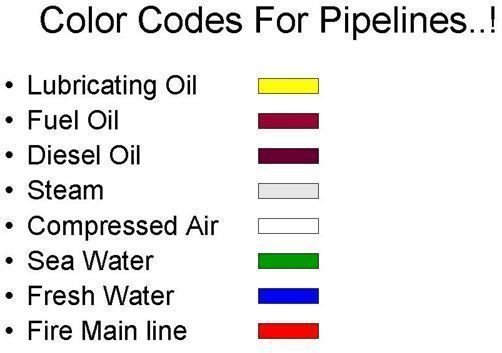
Importance of pipeline tracing

Since there are numerous pipelines and thousands of valves, forming a complex network, one should know the location of various valves and pipelines for the operation of the ship in an efficient and safe manner. The piping system can be compared to human body nervous system where the surgeons should know the main veins/arteries of the body to operate and make people healthier.
Similarly the marine engineers who work onboard have to know all the valves and piping systems to rectify various faults that occur. Majority of the problems onboard ship arises because of unknown location of valves/pipelines. If the various piping line systems are known, then one can be confident on trouble-shooting. So it is necessary for all the engineers to know the basic piping systems onboard ship.
One astonishing fact is that no two ships are same. Each ship has got its own kind of machinery and piping systems. But the basic concept/idea of operation remains the same. But it is always essential to trace the pipelines of its origin and end. So pipeline tracing is just to find out the origin, interconnections, connecting machineries, in-line valves and its end. Take an example of the sea-water systems and explain how to trace the lines.
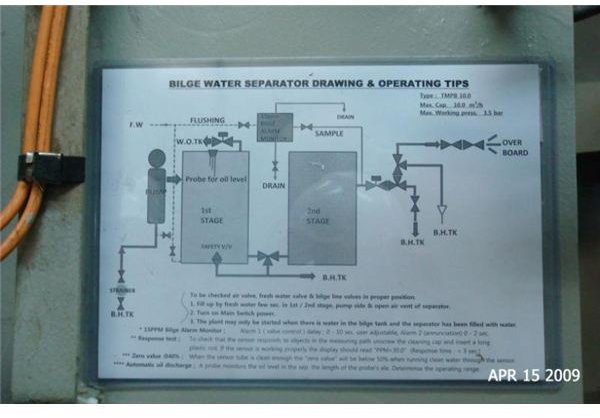
First the sea-water line starts from the sea chest or the low/high sea suctions, then through a filter and set of isolation valves the pipes pass through the main sea water pumps, which imparts energy to the sea water for cooling efficiency. This pressurized sea water is contained and taken to the main fresh water coolers to cool the fresh water(which cools various auxiliary and main machineries). This system is an example for central cooling fresh water system.
The location of valves and pipelines are highly essential and to be kept at finger tips, so that when some emergency arises, engineers should immediately take action to stop, contain & restrict the emergency that has happened. Say for example, the main fuel oil line got holed and hot oil is getting sprayed on hot exhaust gases, leading to a fire. In such emergencies, there is obviously no time to search for valves or pipelines to isolate the leaky line. If someone already traces the path of the pipelines and knows the exact location of the valves, then it is easy to avoid such emergencies happening.
Importance Of Junior Engineer/5th Engineer
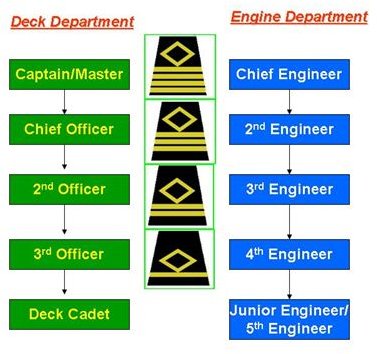
“Junior Engineer” is a very important rank with respect to the engine room. They are Engineers under training after completion of basic education for the sea service. The don’t hold a “certificate of competency”, (C.O.C), to become an “Officer Incharge Of an Engineering Watch”,(OOEW). They are under direct control of 2nd Engineers who is usually the operational/maintenance boss of the engine room. They are supposed to get training on operation/maintenance of various machineries under supervision of senior Engineers.
Out of all these engineers, since Junior Engineers are trainee engineers, they sail for comparatively more time than other engineering officers. This makes them well versed with the history, inventory, spares, records, log books, pipeline tracing & to some extent fault finding too..They usually help senior engineers to get familiarized with the engine room, shortly after their sign-on. They also indirectly share the responsibilities of the 2nd engineer and to some extent other engineers too. Some of the usual jobs of the Junior Engineers are
1. Complete Pipeline tracing
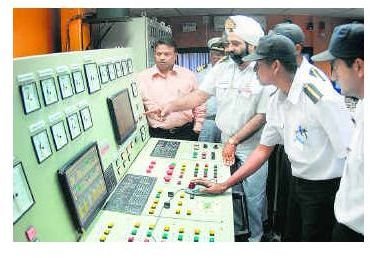
2. Bilges handling
3. Sludge handling
4. 2nd engineers watch routines & log book updating
5. certain paper works for the month end reports.
6. Incineration
7. Learn the operation & maintenance of machineries
8. obey orders of 2nd engineer
9. Help other engineers if directed by 2nd engineer.
and many more…!!
Thus the Rank of Junior Engineer is very vital for the operation of the ship. It is also key for a persons technical knowledge as many engineers learn at this rank.
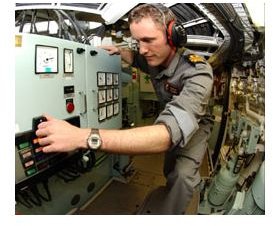
References & Image Credits
UK Navy Website
